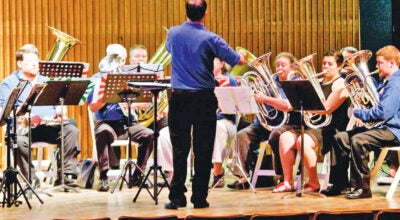City’s $12M sewer project to start Oct. 5
Published 10:19 am Friday, September 25, 2009
IRONTON — The day has arrived.
Beginning Oct. 5, one of the largest infrastructure projects in Ironton’s 160 year history will kick-off as crews from around the state will arrive to start on the city’s $12 million sanitary sewer re-lining project.
The year-long undertaking will re-line every sanitary sewer line throughout the entire city. Many of the brick or concrete lines have been in need of repair for decades and are more than 100 years old. Storm sewer lines are not part of the re-lining project.
When complete, more than 60 miles of sanitary sewer lines will be re-lined with state of the art, cured-in-place-pipe. CIPP is a trenchless way to rehabilitate existing sanitary sewer pipes by form fitting a jointless pipe-within-a-pipe made out of polyester inside the existing pipe.
CIPP installation is a preferred application to extend the life of not only sanitary sewer lines, but gas and water lines. The installation is expected to create an additional 40 years to the life of the city’s sanitary sewer lines, said city engineering consultant, Doug Cade of E.L. Robinson.
Columbus-based Reynolds Inliner, LLC, was awarded the contract for the installation, while Ironton-based Fee Corp., will handle repairing or replacing the 1,033 manholes and covers throughout the city.
The project will be paid for in part by $5 million in federal stimulus money the city was allocated by the Ohio Environmental Protection Agency in June.
The remaining costs are expected to be paid in the form of an installment loan the city will ink though the Ohio EPA’s Water Pollution Control Loan Fund. Those payments come from waste water fees city residents pay.
The process of installing CIPP requires a resin-saturated felt tube made of polyester pulled into a damaged or worn brick and concrete pipe. Little or no digging is required.
Next hot steam or water is used to cure the resin to form a tight fitting, jointless, corrosion-resistant replacement pipe.
An advantage of CIPP technology is that is does not involve excavation to do the rehabilitation along with having the ability to reduce leaks and improve flow in current pipelines. Disadvantages include having to wait between two to five hours for the resin to cure along with having to bypass the flow in the existing pipeline where the liner is being installed.
Cade said the first 90 to 120 days of the project will entail televising and cleaning sanitary sewer lines to identify and correct those lines that are partially or fully blocked or damaged by tree roots or foreign objects.
Once complete, the instillation of the cured-in-place-pipe will be installed. Mayor Rich Blankenship told Ironton City Council Thursday the starting point for the project will be near the water treatment plant area.
Cade said traffic disruptions should be minimal and that door hangers will be distributed throughout neighborhoods in advance of when instillations would be taking place.
“This is a major infrastructure improvement for the city of Ironton,” Blankenship said following council. “We are very fortunate to have this project.”
Blankenship said the project is expected to bring 30 to 40 jobs to the city during construction.
The re-lining venture is the first of a pair of projects to overhaul and improve the city’s aging underground sewer network.
The city and both the Ohio and U.S. EPA are currently under a 17-year agreement to finance and replace its entire combined sewer overflow system.
Peppered with a laundry list of both short and long-term goals, the five-phase project is expected to start construction on July 31, 2012, in North Ironton.




